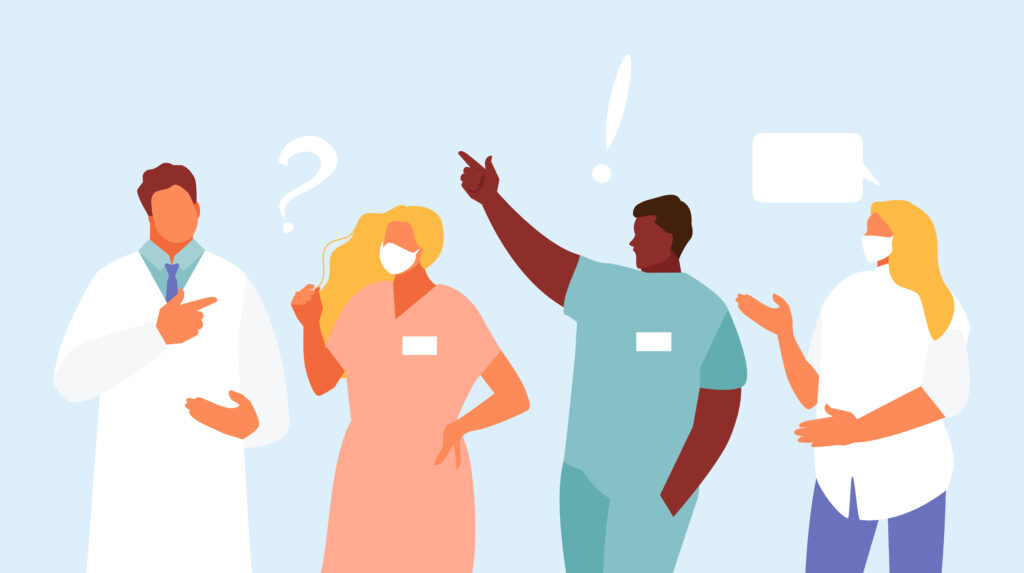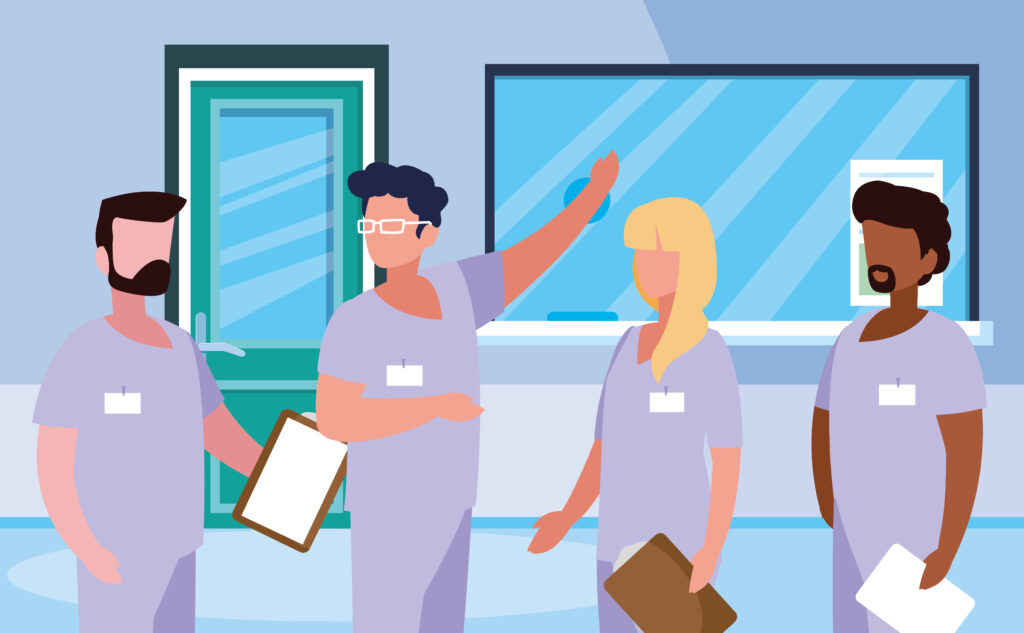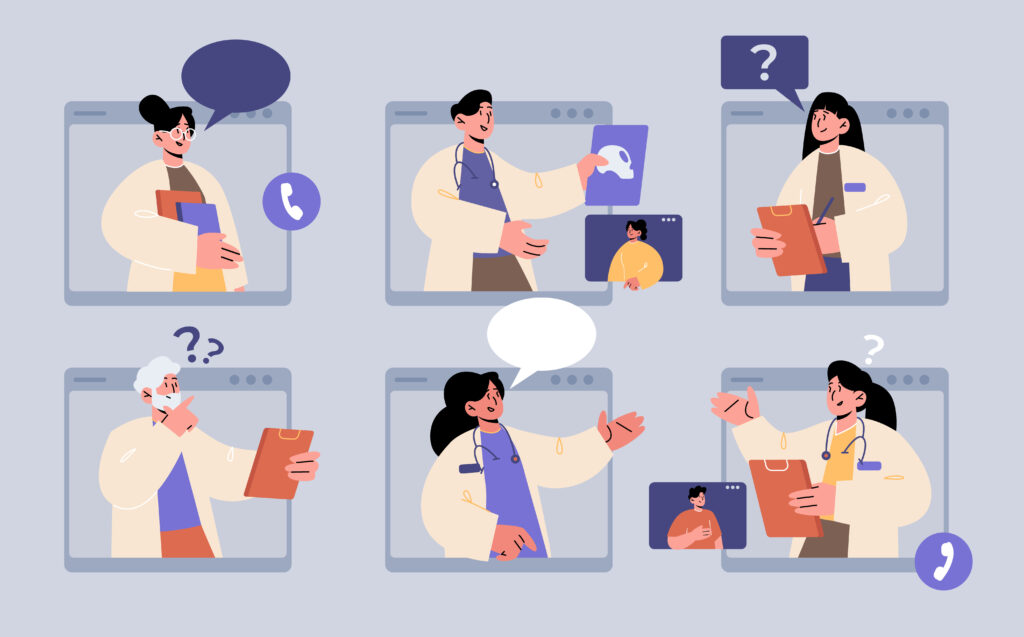Communication is very important for everyone to have. It is essential for any human being in the world to communicate with another human being. Still, there are barriers in the world that hinder the communication process from succeeding or even happening in the first place.
Barriers to communication in health care are common. Healthcare professionals are often riddled with communication barriers in the workplace. In this blog, let’s see what these healthcare communication barriers are and how they affect the communication between healthcare workers and patients.
5 Types of Barriers to Communication in Healthcare

Noise
This type of barrier often occurs during the transmission of information. Patients may encounter noise disruptions when using telehealth services or watching healthcare shows on TV. Poor signal quality during phone conversations or watching TV can hinder patients from properly receiving and understanding healthcare information.
This noise is also a combination of many things, from the voices of many people trying to communicate with one another to other objects in the workplace that produce sound.
Separately these things don’t seem like much, but together these communications barrier at the workplace collectively fill the background. Sometimes with so much sound that it becomes background noise, it can be a real barrier to effective communication.
Competing Demands
In a healthcare setting like a hospital, the demand for immediate attention from staff or doctors can create significant barriers to communication. The overwhelming number of patients competing for limited staff resources often leads to a lack of coherence and clarity in the workplace.
This issue becomes even more pronounced during the current pandemic, where the staff-to-patient ratio is often imbalanced, making it challenging to meet everyone’s needs.
As a result, patients face difficulties in effectively communicating with the staff. Human attention has limits, and the sheer volume of information processed at any given moment can cause important details to be overlooked. Thus, competing demands become one of the significant barriers to communication in healthcare, hinder the delivery of optimal care, and can impact patient outcomes.
Language
Language plays a significant role in effective communication within the healthcare workplace. However, language barriers can pose challenges, especially in diverse healthcare settings where patients and healthcare providers may have different native languages.
These barriers can hinder the accurate exchange of information, potentially impacting patient safety and the quality of care.
- Inaccurate interpretation: When relying on interpreters or translation services, there is a risk of inaccurate interpretation or translation. The nuances of language, cultural context, and medical terminology may not be effectively conveyed, leading to misunderstandings and potential adverse outcomes.
- Limited proficiency- Patients and healthcare providers may have limited proficiency in a common language, leading to difficulty understanding and accurately conveying information. This can result in miscommunication, misunderstandings, and potential errors in diagnosis or treatment.
- Medical Jargon- This can be a significant communication barrier, particularly when patients are unfamiliar with these terms. Healthcare providers may unintentionally use complex medical terminology that patients cannot easily understand, leading to confusion, misinterpretation, and ineffective communication.
Lack of Privacy
A hospital is an example of a public venue where many other people are there with you simultaneously to converse with one another in many ways. This means either as a patient visiting or as a staff member working.
Communication is important in a public venue such as a hospital because there are many potential areas where barriers to communication in healthcare can all go wrong. Sadly, though, the hospital as a public venue can be why communication barriers at the workplace can block certain interactions between patients and staff.
This lack of privacy in most cases in the hospital can be a real problem for getting effective communication out there in the workplace due to this issue. Thus, it is one of the barriers to communication in the healthcare industry.
Non-Verbal Communication
Non-verbal cues, including facial expressions and body language, are essential components of communication within the healthcare workplace. They provide valuable insights into emotions, attitudes, and intentions.
However, communication barriers in the healthcare workplace can arise when non-verbal communication is misinterpreted or influenced by cultural differences, leading to misunderstandings or miscommunication.
- Cultural Differences– Gestures, facial expressions, and body language can have different meanings across cultures. For instance, direct eye contact may be perceived as respectful in one culture but disrespectful in another. These cultural barriers can hinder the accurate interpretation of non-verbal cues, potentially leading to miscommunication.
- Stereotypes and Bias- Preconceived notions about certain ethnic or cultural groups may lead to misinterpretations or judgments based on appearance or non-verbal behaviours.
- Emotional Expressions– Some cultures may encourage open displays of emotions, while others may value restraint or emotional privacy. These cultural differences can lead to misinterpretation of emotional cues and hinder effective communication in healthcare settings.
- Physical and Cognitive Limitations- Some patients may have physical or cognitive limitations that affect their ability to understand or express non-verbal cues. For example, patients with hearing impairments may rely heavily on visual cues, while individuals with cognitive impairments may struggle to interpret non-verbal expressions accurately.
How to Address Communication Barriers in Healthcare

Effective communication skills are essential for healthcare professionals as they facilitate the smooth exchange of information within the healthcare setting. These skills not only aid in promoting clear and concise communication between healthcare providers and patients and foster effective collaboration among healthcare professionals.
To enhance communication and overcome potential obstacles, healthcare providers can implement various strategies:
Encouraging Active Listening
Active listening is a fundamental skill that promotes understanding and builds rapport. Healthcare professionals should actively listen to their colleagues, pay attention to verbal and non-verbal cues, ask clarifying questions, and demonstrate empathy. This approach fosters a supportive environment where concerns and ideas can be openly shared.
Using Clear and Concise Communication
Complex medical terminology and jargon can create barriers to effective communication. Healthcare professionals should strive to use plain language and avoid excessive technical terms when communicating with colleagues from different specialties or departments. Clarity and simplicity in communication enhance comprehension and prevent misunderstandings.
Establishing Feedback Channels
Feedback mechanisms are vital in identifying and addressing communication barriers in the healthcare workplace. Healthcare organizations should encourage open and honest feedback from all team members. Anonymous suggestion boxes, regular surveys, and structured feedback sessions can provide valuable insights for improving communication within the workplace.
Promoting Team Building Activities
Building strong interpersonal relationships among healthcare professionals can break down communication barriers. Organizing team-building activities, retreats, and social events fosters a sense of camaraderie, trust, and mutual respect, leading to improved collaboration and communication.
Providing Communication Training
Continuous education and training in effective communication should be incorporated into healthcare professionals’ development programs. Workshops and seminars focusing on active listening, conflict resolution, and communication strategies can equip individuals with the necessary skills to overcome communication barriers.
Embracing Technology
Healthcare organizations can leverage technology to improve communication processes. Implementing secure messaging platforms, electronic health records, teleconferencing tools, and healthcare apps like Hostalky can enhance communication efficiency, allowing for a quick and convenient exchange of information between healthcare professionals.
Conclusion

In conclusion, addressing communication barriers in healthcare is crucial for ensuring effective collaboration, streamlined information exchange, and improved patient care.
To further facilitate effective communication in the healthcare workplace, one app that stands out is Hostalky— a cutting-edge healthcare app designed to promote seamless communication between healthcare professionals. With its user-friendly interface and secure messaging platform, Hostalky enables a quick and convenient exchange of information, making collaboration among healthcare teams effortless.
Check out the app in Google Play Store and Apple App Store today!
Stay informed on the latest healthcare trends, news, and AI advancements. Join us on LinkedIn and Instagram for more updates!
